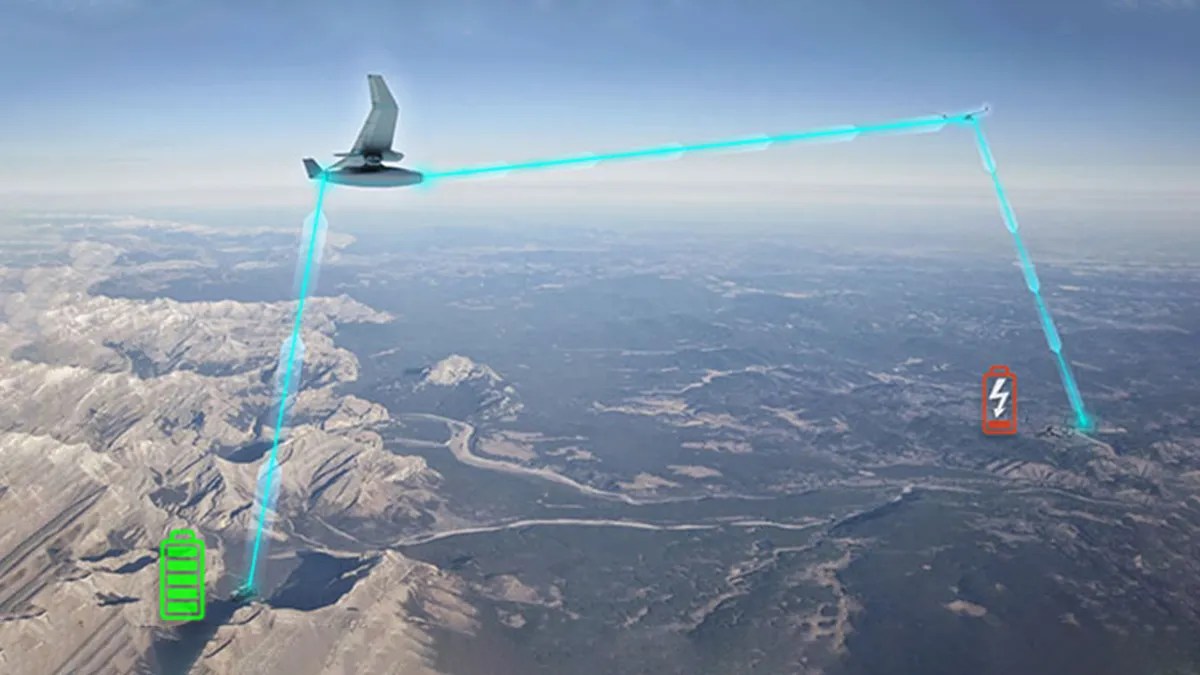
The highly geeked out unit of the U.S. Department of Defense has issued a $10 million contract to develop its long contemplated Persistent Optical Wireless Energy Relay system (POWER), which will likely use drones as airborne platforms to conduct electric refueling for other vehicles – or for re-juicing their own batteries.
The United States Defense Advanced Research Projects Agency (DARPA) said it inked the deal with Raytheon, Draper, and BEAM Co. to design and develop the wireless optical relay tech for the system. Early stages of work describe the project as using resilient, speed-of-light energy networks relying on aerial transmission platforms – most probably drones. Those will act as relay stations for high power beams shot from ground stations for use by battery-driven targets.
Beneficiaries of DARPA’s planned electrical recharging tech would include vehicles or even facilities located in other ground locations and redirected from drones in the sky; or other UAVs needing additional power to continue or complete missions. Obvious examples include military craft on extended reconnaissance, intelligence, or strike sorties, or those performing long-haul delivery work.
In addition to the POWER program’s aim of removing many current limitations to how myriad drones operate, DARPA officials said the innovation stands to transform the way energy is transmitted generally.
Often credited to visionary inventor Nikola Tesla, the program’s theoretical objective could become the first major change to transmission methods since electricity began spreading across the globe over a 150 years ago.
“Energy underpins every human activity, including defense… (and) we need ways to deliver energy that overcome the vulnerabilities and other shortcomings of our current paradigm,” said Paul Jaffe, head of DARPA’s POWER program, whose conceptual diagrams include flying drones serving as relay stations. “This project has the potential to advance power beaming by orders of magnitude, which could radically reshape society’s relationship with energy. A wireless energy web could unlock power from new and diverse sources, including from space, and rapidly and reliably connect them to energy-starved consumers.”
DARPA says the first phase under the new contract will include benchtop demonstrations of technologies central to the POWER platform development. That is expected to continue for the next 20 months, with a three-month buffer built in should extra risk reduction be needed (such as ensuring off-kilter beams don’t fry transmission drones, or crisp other flying objects intersecting their path).
The second phase, scheduled to open in early 2025, will focus on new relay technologies being integrated into an existing platform DARPA has created, enabling low-power transmission. During that period, the expanded system will be demonstrated during airborne trials, with drones presumably acting as the aerial conduit.
Image: DARPA
FTC: We use income earning auto affiliate links. More.



Comments